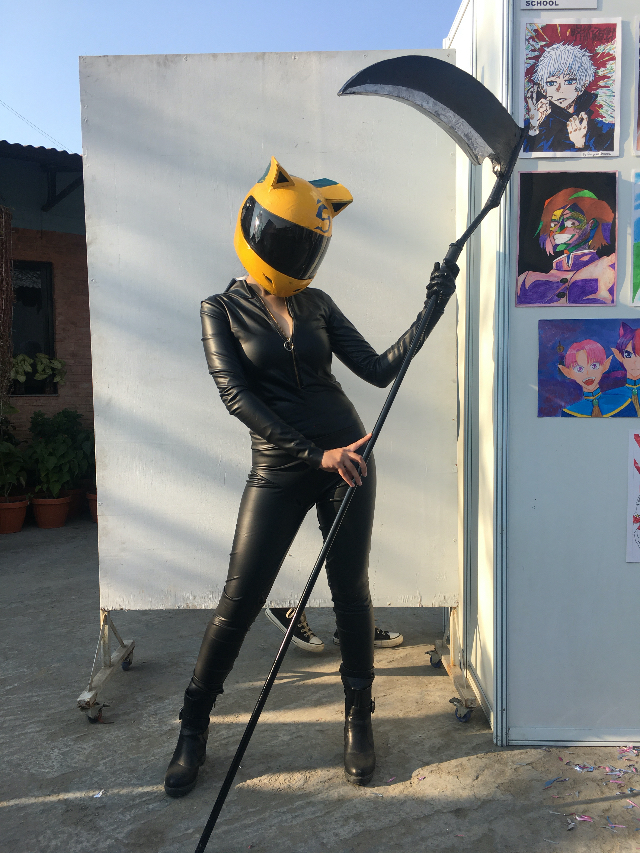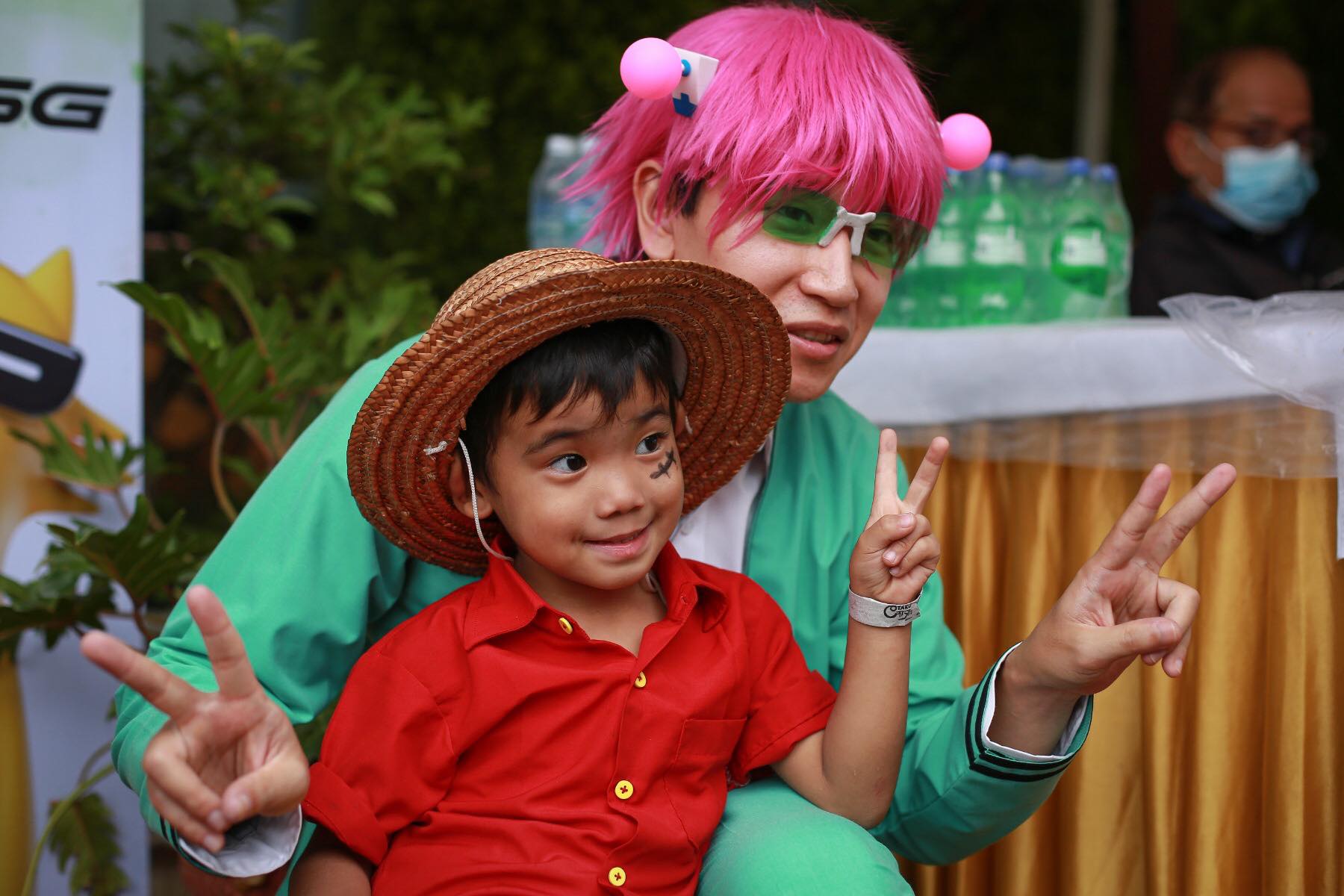Cosplaying in K'mandu
Fan conventions give Nepali enthusiasts space to express themselves through cosplaySuki Manandhar grew up watching anime and cartoons and reading manga whenever she could get her hands on them. Pokemon, Digimon, Dragon Ball Z, Haibane Renmei brought her joy and comfort.
Back then, Manandhar wished she could dress like the characters she saw on screen. She would sometimes engage in ‘closet cosplay’, making costumes and dressing like anime characters and sharing those with fellow anime fans in online forums.
“The stuff that was said to have been targeted towards children addressed issues like mental health, what it means to have important people in your life and for them to leave,” says Manandhar. “I had no idea what they meant when I was a child, but I appreciate them more when I watch them now.”
Cosplay, a portmanteau of costume and play, is an art form in which artists dress and accessorise as characters from across pop culture — anime, cartoons, comic books, video games, and other sources from tv and movies. The term was coined by Japanese reporter Nobuyuki Takahashi in 1984 after he attended the World Science Fiction Convention (Worldcon) in Los Angeles.

Although masquerade balls, carnivals and pageants where people dressed up in costumes have been commonplace since the 15th century, cosplay in mainstream media and art emerged out of fan culture through science fiction conventions in the 20th century.
In 1939, science fiction writers Forrest J Ackerman and Myrtle Douglas became the first two people to attend the 1st Worldcon in ‘futuristicostume’. A masquerade competition began at Worldcon the year after, and fan conventions would continue to multiply.
On the other side of the world in Japan, the emergence and rising popularity of manga and anime in the 1950s and 60s made way for ‘costuming’ as a fan activity in the 1970s.
The San Diego Comic Convention (SDCC) began in the USA in 1970. Five years later, Japan inaugurated its own convention, Comiket. But the subculture would not make its way into Nepal until decades later.

Rohit Shrestha started watching anime when he was in 8th grade, began cosplaying in 2014, and is among the earliest cosplayers in Nepal. He is now one of the organisers of Otaku Jatra, Nepal’s largest pop culture convention.
Back in 2013, Shrestha and like-minded enthusiasts used to get together and hang out every Saturday at the anime store owned and operated by fellow anime fan Wataru Oikawa Shrestha.
Realising that there was a growing community of pop culture fans in Nepal, their collective Otaku Club joined hands with another collective, Otaku Next — which used to publish its Nepali mangas magazine— to host a small-scale pop culture events which made its way into smaller pop-up events, fanart and cosplay competitions, and exhibitions.
In 2014, when she heard about the Otaku event, Suki Manandhar made her own costume, often sewing it out of sight of her teachers even as she attended her college lectures. The day before the convention, with her outfit still not done, Manandhar was up the whole night completing it.
Manandhar went to her first cosplay event as Taiga from the anime Toradora!. She has been to many conventions since but recalls dressing up as Mikasa Ackerman from Attack on Titan as one of her most memorable cosplays. Depending on the characters, Manandhar spends as much as five months creating intricate costumes.
The 26-year-old communications officer, who has also illustrated and written a four-chapter manga The Birdsong, has been preparing for a year for the upcoming Otaku Jatra Fall 2022 on Saturday in Kathmandu, working on her costume whenever she has time.


Kriti Chamling Rai began cosplaying in 2016 after she and her friends visited the Otaku Store, where they met organisers who informed them of an upcoming convention.
“We were so surprised that there was even a store that sold manga and anime paraphernalia, let alone conduct conventions,” Rai recalls who grew up watching anime and cartoons with her aunt.“We didn’t have internet, we would go to the DVD store and get CDs.”

For the convention, Rai started with characters that did not require complex props or detailed costumes, deciding to go as Tenten from Naruto.
“I saw so many people dressed like characters I had grown up watching on screen and loved — it was amazing to see them walking around in real life,” she muses. “I have been to so many conventions since then, but that first one will always be special.”
Rai’s cosplay as Saber from the Japanese visual novel Fate/stay the night, which she worked on for three months would win her the 2nd prize at Comic Con Nepal 2017 and take her to New Delhi to represent the country.
Back in Nepal, Otaku Jatra finally hosted a large-scale convention — a jatra— in 2017. By 2020, they had expanded enough to be a special event within Visit Nepal 2020, but those plans were scrapped due to the Covid-19 pandemic.
"My hobby turned into passion and passion turned into a business,” says Rohit Shrestha about Otaku Jatra speaking with Nepali Times ahead of their convention that will include cosplay, animation, K-pop contests, e-sports competitions, arcade gaming, and much more.
Shrestha recalls a man in his sixties attending a convention with a cowboy hat and a prop gun. He was happy to finally find a space in Nepal where he could express his childhood wish of being a cowboy. We also get plenty of expatriates, little children dressed as Naruto or Dragon Ball Z characters with their parents in tow, adds Shrestha.

Otaku Jatra has branched out to India and approached content creators across South Asia to participate in events in Nepal with the plan to turn the country into a mecca for pop culture fans in the Subcontinent.
“We have mountaineering and adventure tourism. Why not pop-culture tourism?” says Shrestha. “It’s going to take a long time to get there, but it’s a hustle.”
The collective is also looking into ways to expand its digital platform in order to help artists and content creators make their hobbies profitable. Conventions like Otaku Jatra have also provided them with a space to showcase their work — be it cosplay itself, animation, or other forms of art.
“These conventions are also networking opportunities for artists and corporations,” Shrestha adds. “We hope content creators can expand their work beyond hobbies into something that is more sustainable.”
Additionally, the collective hopes to expand Nepali pop culture itself. One of its most recent undertakings is the ‘Jatraverse’, a digital universe through which they plan to introduce and incorporate characters from Nepali folklore and mythology — like the Yeti, Pisach, and Kichkandi — into their artform.


In 2017, Otaku Jatra took their display of cosplay to Nyatapola, which people mistook for Gaijatra. But the history of Gaijatra --which can be considered a form of cosplay, muses Shrestha — might make it easier for Nepalis to reconcile with an art form like cosplay because there is already a similar history of dressing up and expressing oneself through costumes in Nepal. But all of this has to be done in a culturally sensitive manner, Shrestha adds.
But the cosplay community across the world has had to confront racism, misogyny, harassment, and homophobia. In Nepal, cosplayers say they have faced sexism and body shaming, as well as some degree of ignorance and active pushback when artists have tried to speak out. In fact, body shaming and online bullying have held back many people from being part of the community.
For their part, organisers say they will ensure that the event is a safe space for artists to express themselves. “Cosplay is not consent,” Shrestha says, echoing the phrase meant to convey the anti-harassment policy at the New York Comic Con in 2014 that later led to a larger movement against the harassment of female cosplayers within the global cosplay community.
Says Suki Manandhar: “This is a community where you can be anything regardless of who you are. I have met a lot of people who have chosen to be kind, understand consent, and stand up for each other.”
writer
Shristi Karki is a correspondent with Nepali Times. She joined Nepali Times as an intern in 2020, becoming a part of the newsroom full-time after graduating from Kathmandu University School of Arts. Karki has reported on politics, current affairs, art and culture.




